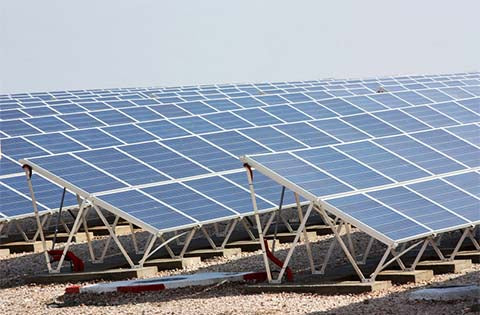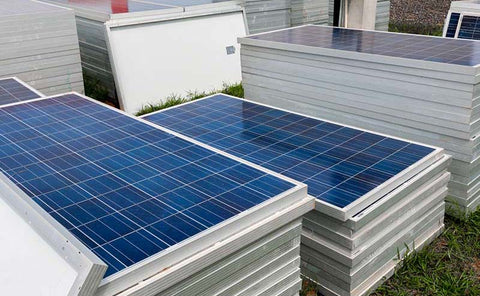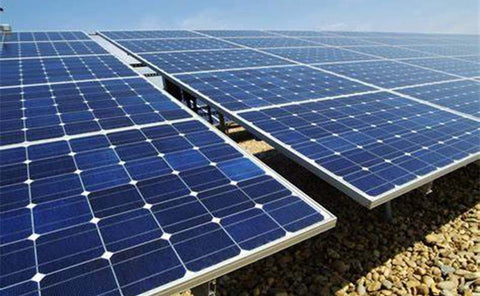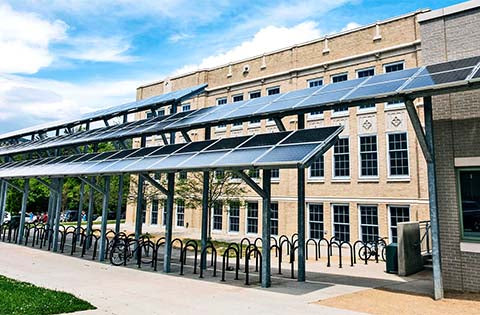As we all know that the lifespan of solar panel usually last 10-25years, and some kinds of solar panels are even shorter. Then the question is coming: How the solar panels recycling work? To be honest as per several reports only 10% of the PV panels are been recycled currently worldwide and the rest ends up in dump yards without following many regulatory guidelines across countries.
How PV modules recycling work?
PV modules are mostly recyclable. Materials such as glass, aluminium, and semiconductors can theoretically be recovered and reused. It is therefore important that consumers, industry, and PV manufacturers take responsibility for the EoL of these modules. To date, the most commonly used methods for recycling c-Si PV modules are based on mechanical, thermal, and chemical processes.
Thin-film solar cells use far fewer materials than c-Si cells, but there are concerns about the availability and toxicity of materials such as tellurium (Te), indium (In), and cadmium (Cd). In addition, the production process for some reactor cleaning operations also emits greenhouse gases. Because of these issues, it is very important to focus on PV module recycling in all technologies.
PV Cycle is a non-profit organization dedicated to managing PV waste through a solar technology waste management program. PV Cycle was the first company to establish a PV recycling process and PV waste logistics across the EU. In 2016, their PV recycling process achieved a record 96% recycling rate of c-Si PV modules (recycled solids). This is a percentage over his current European WEEE standards. The process begins by removing cables, junction boxes, and frames from the PV modules. The modules are then shredded, sorted, and separated. Separating materials allows them to be sent to specific recycling processes associated with each material.
The recycling process begins by crushing the modules into large pieces and then crushing them into small pieces (5mm or less) in a hammer mill. Next during 4-6 hours, the semiconducting film is removed in a low-speed leach drum. The remaining glass is exposed to a mixture of sulfuric acid and hydrogen peroxide with the goal of achieving the optimum solid/liquid ratio. The glasses are then separated again. The next step is to separate the glass from the large pieces of ethylene vinyl acetate (EVA) using a vibrating screen. The glass is washed and sent for recycling. After using sodium hydroxide to precipitate the metal compounds, they are sent to another company where they are processed into semiconductor-grade raw materials for use in new solar panels. The process recovers 90% of the glass used in new products and 95% of the semiconductor material used in new solar panels.
In addition, several innovative processing methods have been developed for the recycling of PV solar modules.
In the first step, the materials are mechanically crushed and separated. The next step uses chemical treatments to recover the semiconducting metal. The aluminium metallization is then also recovered and can be used to produce wastewater treatment chemicals such as alumina.
The current study provided an overview of possible PV recycling processes for solar modules, including c-Si and thin-film technologies. Motives, laws, and current processes were discussed and possible issues were resolved. To date, the c-Si module recycling process results in a net cost activity compared to landfill (avoiding the real environmental costs and externalities of the latter). By recovering energy and embedded materials while reducing CO2 emissions and energy payback time (EPBT) across the PV industry, the need to scrap PV module recycling just because current methods are not profitable There is no Solar power waste management has the potential to open new avenues for industrial development, offering employment prospects for both public and private sector investors.
Twitter: Solarparts Instagram: Solarparts
Tumblr: Solarparts Pinterest: Solarparts
Facebook: Shenzhen Solarparts Inc
Email address: Philip@isolarparts.com
Homepage: www.isolarparts.com





